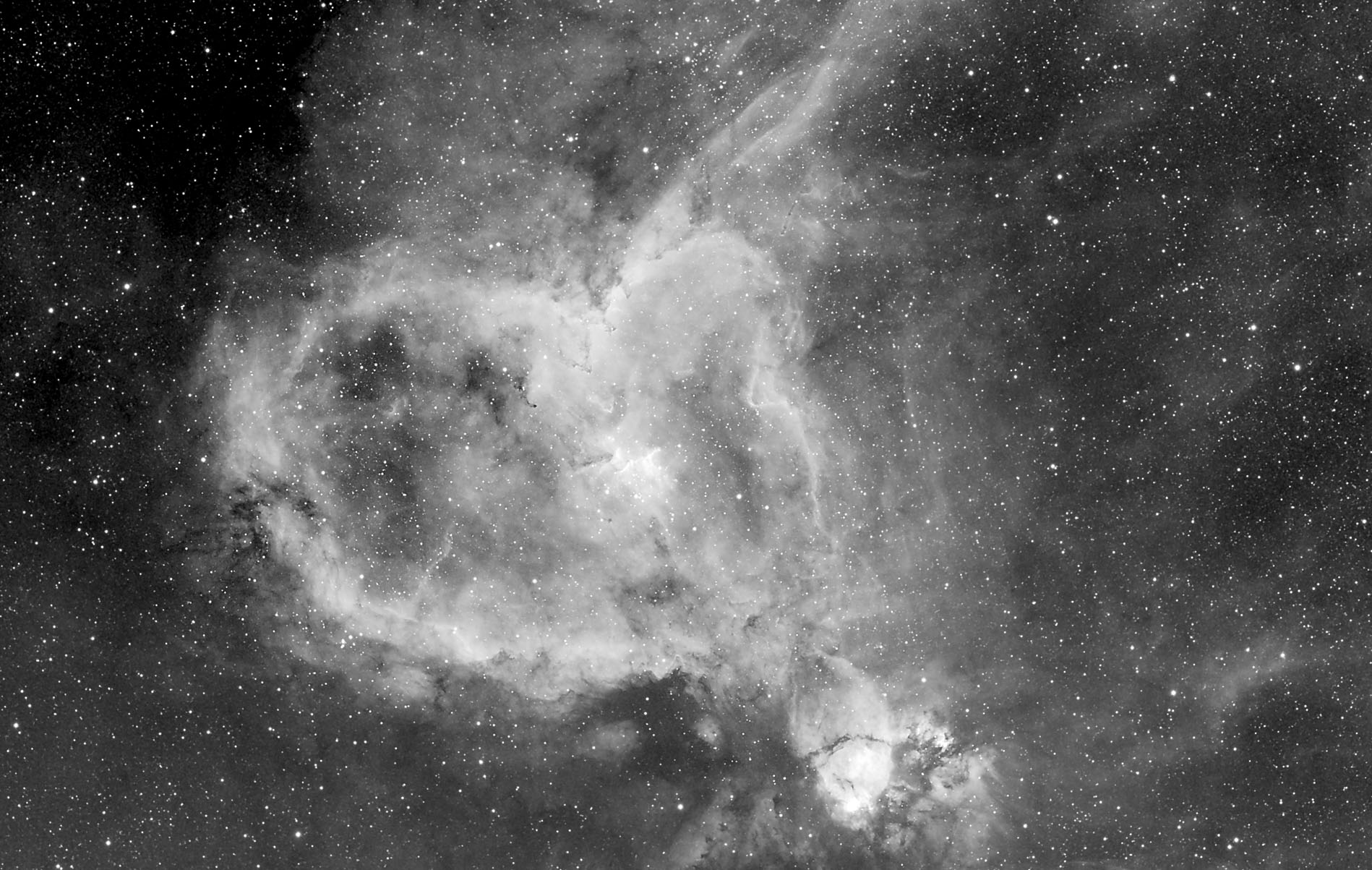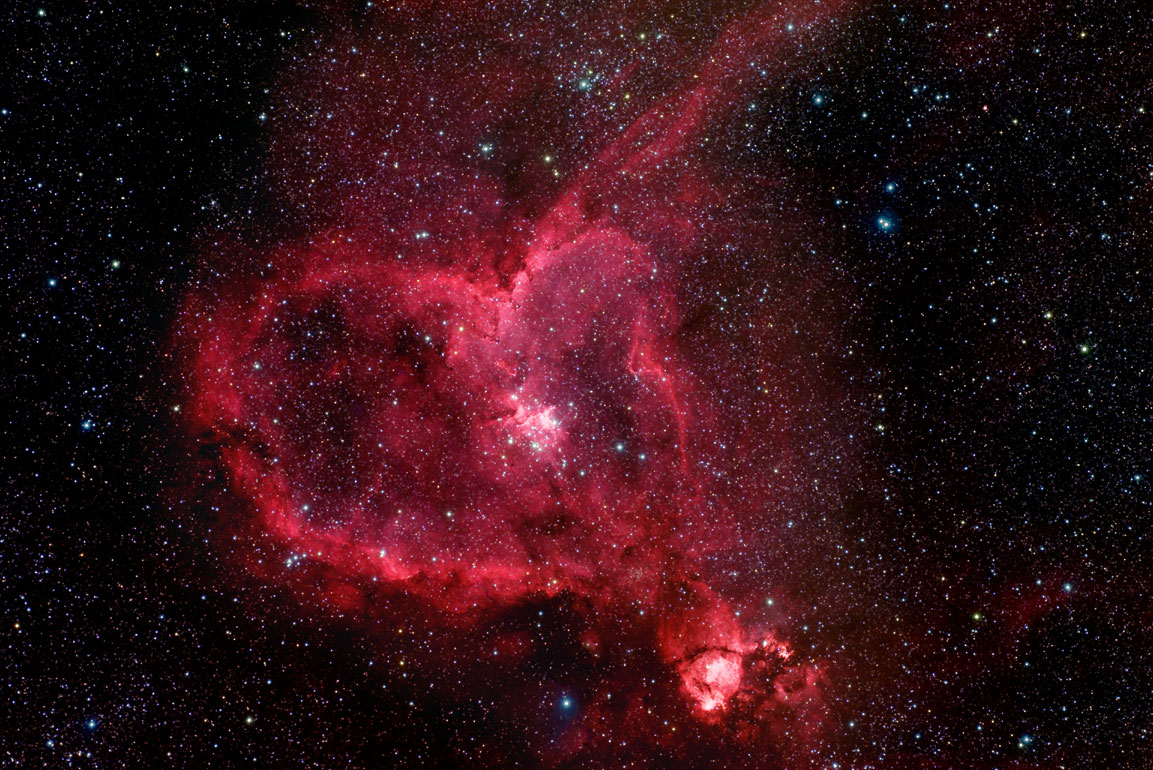|
“Glowing Heart”
The Heart Nebula, IC 1805, lies some 7500 light years away from Earth. It is
located in the Perseus arm of the Galaxy in the constellation Cassiopeia. This is an emission nebula showing glowing gas and
darker dust lanes. This nebula is formed by plasma of ionized hydrogen (HII) and free electrons. The hydrogen has been ionized
by ultraviolet radiation from young hot stars. The nebula thus exhibits a characteristic red spectral glow (represented in
this monochrome image by white). The image above was captured using a 6nm wide hydrogen-alpha filter centered at 656 nm.
Sources: NASA
"Click On Image For Larger Size"
See color image below
| Scroll down for image details |

|
Image
Details:
OTA: Tak FSQ 106N
Camera: SBIG STL11k with Astrodon H-alpha filter
Mount: AP 1200
Guiding: STV
Location: My balcony, Manhattan Beach, Ca
Time: 11/28-29/2004 and 12/02-03/2004
Exposure: 680 minutes, 20 minute sub frames
Processing: Reduction in CCDSoft, Alignment in Registar, Combining in Sigma
Combine by Ray Gralak, Processing in PS CS (levels, curves, slight sharpening and noise reduction)
"Click On Image For Larger Size"
| Color work-in-progresss version |

|
| (L&Ha)(R&Ha)GB combined - RGB @ 1x1- 60 minutes each |
OTA: Tak FSQ 106N
Camera: SBIG STL11k with Astrodon Tru-balanceRGB filters
Mount: AP 1200
Guiding: STV
Location: Color taken at Lockwood Valley, CA
Time: 12/12/2005
Exposure: 60 minutes per filter, 20 minute sub frames
Processing: Reduction in CCDSoft, Alignment in Registar, Combining in Sigma
Combine by Ray Gralak, Processing in PS CS
Luminance from above Ha image, combined in PS CS
|
